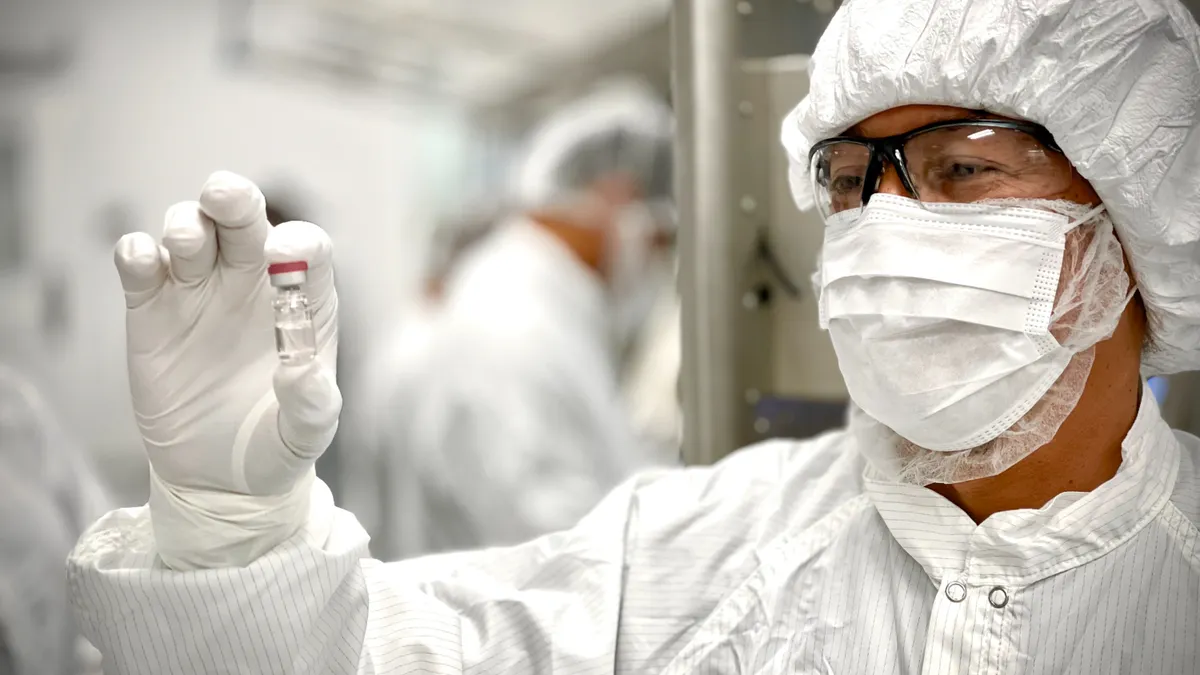With their promise to transform disease trajectories, cell and gene therapies (CGTs) are bringing new hope to patients with an ever-expanding array of high-burden and chronic conditions as well as rare genetic disorders. Industry analysts report that CGT investments have been increasing by more than 20% each year since 2022, with over 4,400 of these therapies currently in development worldwide. Yet the path to successful CGT commercialization remains difficult to navigate. Developers must overcome significant technical, logistical, financial and regulatory challenges to bring these therapies to patients. Among these challenges, one that’s often overlooked but absolutely critical for successful scale-up is maintaining consistent, high-quality fill-finish capabilities.
“Fill-finish is the final step before the product goes to the patient,” says Roberto Estrada, supervisor of fill-finish manufacturing at MilliporeSigma’s viral vector CDMO in Carlsbad, CA. “It’s among the more important steps in CGT manufacturing, since it directly impacts the final product’s quality, sterility, potency and homogeneity, and all of these matter for patient safety.”
When looking for a CDMO partner for CGT manufacturing, it’s essential to find one with demonstrated expertise in viral vector production as well as filling capabilities that can be tailored for advanced therapies. CGTs are comprised of extremely high value materials, and they’re fragile and sensitive to contamination and temperature changes. Your fill-finish CDMO should have robust strategies for preventing product loss, maintaining aseptic operations and controlling temperatures during the entire production process, including fill-finish operations. They should also have capabilities and expertise on hand to support CGT developers’ current needs and future requirements, regardless of whether the product is in early trials or scaling up for commercialization.
Estrada shared the following five capabilities that CGT developers should seek out in a fill-finish CDMO partner. These are must-haves for achieving excellence during CGT drug product manufacturing:
1. Understand the product’s stability at ambient temperatures
CGTs often have limited stability at room temperature, which can be of particular concern when scaling up production. “Their limited stability means the entire drug product operation—from formulation to fill, visual inspection and labeling, all the way through reconciliation—needs to be highly efficient to minimize titer loss,” Erik Amundrud, head of manufacturing and MSAT for MilliporeSigma’s viral vector CDMO in Carlsbad, CA, explains. With larger batch sizes, many of the stages in fill-finish operations, such as labeling, can take longer, so it's important to consider this when planning for drug product manufacturing. By conducting studies to determine how long the product can remain stable at ambient temperature, a developer can be confident in the quality of final product.
2. Protect against product loss
The high materials costs and small batch sizes of CGTs make minimizing product loss during manufacturing and fill-finish important. Because lot sizes can be small (sometimes fewer than ten vials per batch), even a loss of as little as two percent of the material can mean missing an entire patient dose. Estrada says that designing fill-finish systems with ultra-short flow paths, precision pumps and reduced-diameter internal tubing can minimize losses, while selecting the right single-use filter can maximize the recovery of residuals during filtration. Having 100% inline dose-weighing capacities can reduce product loss compared to post-fill weight checks, too.
3. Maintain robust contamination controls
Like all biologics, CGTs are vulnerable to environmental and cross contamination, which can compromise product integrity. Performing fill-finish in an isolator and using pre-sterilized, closed-system, single-use assemblies for fluid handling, filtration and transfer minimizes exposure to the environment, reducing contamination risks. Having pre-validated, ready-to-use assemblies on hand can speed up turnaround time for a new product, Estrada says. Additionally, leveraging an automated filling system removes the need for manual product handling, minimizing errors.
4. Keep up with global compliance requirements
Both the European Medicines Agency (EMA) and the US FDA have issued guidance on product sterility and contamination control measures that’s specific to CGT manufacturing. Aseptic processing is a critical control point, with growing numbers of regulatory authorities requiring the use of an isolator. Look for a CDMO partner whose facilities have passed multiple inspections by global regulatory agencies, and one that operates in a state of audit- and inspection-readiness at all times. Your partner should be able to help you navigate the container, closure and product labeling requirements for all geographies where you plan to market your therapeutic.
5. Maintain state-of-the-art equipment, facilities and supply chains
To deliver what’s needed at both small and larger scales, fill lines need to be flexible enough to accommodate different sizes and types of vials to meet varying product requirements. “In our facility, the fill line has been pre-validated for typical vial sizes—such as 2 mL, 5 mL, 10 mL and the ISO standard 2R format—and for both glass and Crystal Zenith® (CZ) vial types,” Estrada says. “This reduces costs and timelines. But our fill lines can also be validated for a broad array of other vial types and sizes, so that we can meet all of our clients’ drug product needs.”
Leveraging automation in the fill line decreases the need for human intervention, reducing error and contamination risks. Leading CDMOs will use automation in processes, closed systems and product labeling. They should also maintain state-of-the-art cold rooms and freezers for on-site product storage, as well as strong relationships with logistics partners with mature cold chain shipping capabilities.
Drug product operations for viral vector therapeutics demand specialized expertise. A CDMO partner with deep experience in this area will have access to the facilities, tailored processes, enhanced quality control measures and advanced technologies needed for safe and effective CGT fill-finish operations.
MilliporeSigma has been manufacturing cell, gene and oncolytic therapies for more than 30 years. Their viral vector CDMO offers end-to-end solutions that integrate services from early process development through fill-finish. They provide tailored technology transfer capabilities for CGT drug products, including onsite operations for formulation, fill, visual inspection, labeling and storage. Their 202,000 square-foot facility is solely dedicated to viral vector production and can support a wide variety of batch sizes and production runs.
“These are the types of products we work with every day,” Estrada says. “We know how to maintain strict standards to prevent cross-contamination, we’re familiar with cold chain manufacturing and we’re well aware of CGTs’ unique requirements. With our state-of-the-art facility, we’re able to do all of this work at any scale.”
Learn more about MilliporeSigma’s viral vector CDMO services.
MilliporeSigma is the U.S. and Canada Life Science business of Merck KGaA, Darmstadt, Germany.










